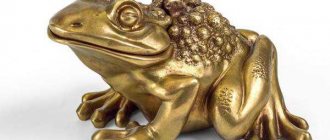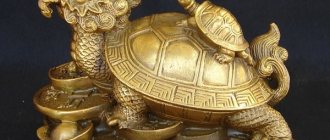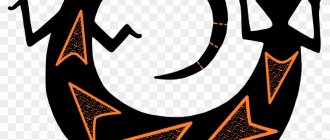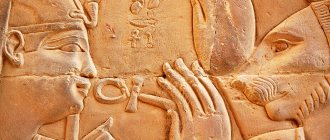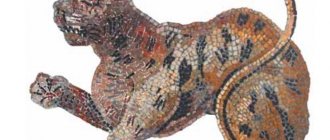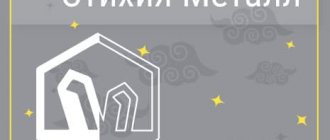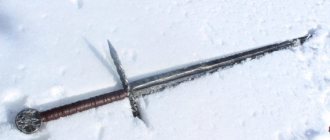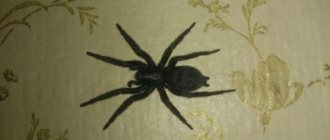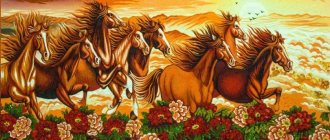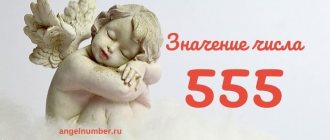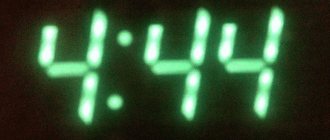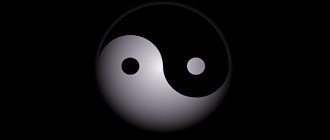Simple emoticons with text
) – a closing parenthesis, an emotion of joy, which can be used to give a positive color to the written text or to demonstrate your friendly attitude towards the interlocutor. Smileys with similar meaning: =) : ).
(– an opening parenthesis symbolizes sadness, disappointment. It is appropriate to use, for example, if a message from your interlocutor upset you.
))))) : D =D – emoticons equivalent to the abbreviation LOL, hinting that something made the person who sent them laugh very much.
:'-) :'-D – laughter to tears.
}:-> or ]:-> - two options for the smile of an evil genius who has conceived an insidious plan or simply a gloating person.
:-/ – if you are puzzled by something, confused or filled with slight dissatisfaction, this sequence of symbols will express your emotions in the best possible way.
._. or -_- - these three emoticons will be a great way to demonstrate ostentatious indifference or disdain for something.
*O* or *_* or ** – strong admiration, impression of what he saw.
) :-[ ] :-0 o_O oO – different variants of emotions of surprise, which can be understood by a wide open mouth and bulging eyes.
:-e – emoticon of the emotion of disappointment. It's hard to say, though, why exactly he looks like this.
:-E or :E or :-t – rage, anger, strong aggression.
:-< – sad mood emoticon.
:*) :-[ or %0 – used in cases where a person is confused by something/someone.
Emotional actions and gestures
The purpose of emoticons from this category, unlike those previously discussed, is not to convey the mood of the participant in the correspondence, but to help describe various actions or signals sent.
:-* or :-{} – designations of a kiss in the text version.
{} – this emoticon can demonstrate that you want to hug your interlocutor.
or :-p or :-Ъ – teasing the interlocutor with his tongue stuck out.
[:]|||[:] – image of a button accordion. In Internet slang, the name of this musical instrument usually refers to something that is no longer relevant and has been seen many times.
:-X – please shut up, keep your mouth shut, keep your mouth shut.
/:-] – a hint that the interlocutor’s attic is leaking a little.
*:O) – symbolic designation of a clown. If a participant in the correspondence has gone too far with humor and cannot stop, you can notify him about this.
*->->— – image of a carnation. You can give your interlocutor a flower.
(_!_) – naked human ass. It is unlikely that your friends or acquaintances will appreciate such a gesture in real life, but in virtual spaces such an expression of emotions is quite common.
Character and personage emoticons
This set of emoticons allows you to depict a person with any expressed characteristic (both psychological and physical characteristics) or a famous person, for example, a character from a cult film or cartoon, a historical figure, etc.
:-()=0 – depicts a person who has obvious problems with excess weight (fat).
:-{) – emoticon with a thick mustache.
:~X – denotes a person who prefers to keep his mouth shut and keep quiet.
L:) – associated with losers/losers, people unlucky in life.
{(:-) – wearer of false hair, wig.
~(_8^(|) – the recognizable face of Homer Simpson, the hero of the popular American animated series.
(:\/) – Pac-Man, a character from an old computer game.
(>o-< – lover of skydiving.
<]:-o) – wizard/sorceress, witch or sorceress (depending on the context of use).
Folk signs
There are many signs that mention a frog. In most cases, it symbolizes the amazing ability to adapt and transform, to find a way out of any situation. She feels great both on land and in water. She is not afraid of swamps and bogs.
There is a belief that a person in great need may meet a toad with a crown on his head. He should prop up the hem or spread a rag in front of her. The toad will jump up and give him riches.
If you catch a frog, bring it home, tell about your wishes, put it in a box and leave it on the window, and you don’t find it in the morning, then your wish will definitely come true. But if the frog remains sitting in the box, the wish will not come true.
It is considered a bad omen if a frog jumps around the house - good luck and luck will not come to the house for a long time.
Japanese emoticons made from symbols
Being a very emotional and creative nation, the Japanese quickly mastered communication using emoticons. Moreover, their visually rich language allowed them to create several thousand variants of their emoji, called kaomoji (stands for face + symbol). Their main difference from the designations popular in Western culture is that the schematic image of a human face is always in a horizontal plane. There is no need to mentally turn it 90 degrees. Otherwise, the differences are minimal, except that the Japanese are not shy about peppering their emoticons with rarely encountered characters.
Japanese emoticons of positive emotions
Joy emoticons are usually distinguished by high-set eyes, a smiling mouth, and raised wand hands. A variety of symbols can be used as a mouth, from a regular dot to letters of the Greek alphabet. Many Japanese women use the letter ω (omega) for their mouth, reminiscent of lips folded in a bow. So, in their opinion, the emoticon becomes more cute, “kawaii”.
| (*^ω^) | (´ ∀ *) |
| (o^▽^o) | (⌒▽⌒)☆ |
| ヽ(・∀・)ノ | (´。• ω •。) |
| (o・ω・o) | (@^◡^) |
| (^人^) | (o´▽o) |
| (´ω) | (((o(*°▽°*)o))) |
| (´• ω •) | (^▽^) |
| ╰(▔∀▔)╯ | (─‿‿─) |
| (✯◡✯) | (◕‿◕) |
| (⌒‿⌒) | \(≧▽≦)/ |
| (*°▽°*) | ٩(。•́‿•̀。)۶ |
| (´。•ᵕ •。) | ( ´ ▽ ) |
| ヽ(>∀<☆)ノ | o(≧▽≦)o |
| \( ̄▽ ̄)/ | (*¯︶¯*) |
| (o˘◡˘o) | \(★ω★)/ |
| (╯✧▽✧)╯ | o(>ω<)o |
| ( ‾́ ◡ ‾́ ) | (ノ´ヮ)ノ*: ・゚ |
| (๑˘︶˘๑) | ( ˙꒳˙ ) |
| (´・ᴗ・) | (ノ◕ヮ◕)ノ*:・゚✧ |
Love emoticons - the Japanese very often use the heart symbol ♡ in them, placing it on the cheeks, in the hands of the emoticon, or even instead of eyes. Asterisks (*) in context denote embarrassment, as do the hands covering the face emoji. The letter ω (omega) indicates the intention to kiss the interlocutor.
( ´ ∀ )ノ~ ♡ – an emoji with a raised hand, a tilde and a heart imitates blowing a kiss to the object of your interest.
Σ>―(〃°ω°〃)♡→ – original confession “I fell in love.” Kawaii emoticon pierced by Cupid's arrow.
♡ (˘▽˘>ԅ( ˘⌣˘) – a couple in love holding hands with a contented look.
☆⌒ヽ(*'、^*)chu – these three consecutive letters in Japanese are consonant with the sound of a kiss. In practice, it turns out something like the Russian “smack-smack”.
(ノ´ z)ノ– a smiley with its entire appearance showing that its sender wants to hug and kiss the recipient well.
A few more options for love emoticons:
| (─‿‿─)♡ | (´。•ᵕ •。) ♡ |
| (´ω♡) | ♡( ◡‿◡ ) |
| (ღ˘⌣˘ღ) | (♡°▽°♡) |
| (´• ω •) ♡ | (´ ε )♡ |
| ╰(*´︶*)╯♡ | (*˘︶˘*).。.:*♡ |
| (≧◡≦) ♡ | (⌒▽⌒)♡ |
| ♡ (˘▽˘>ԅ( ˘⌣˘) | ( ˘⌣˘)♡(˘⌣˘ ) |
| σ(≧ε≦σ) ♡ | ♡ (⇀ 3 ↼) |
| (˘∀˘)/(μ‿μ) ❤ | ❤ (ɔˆз(ˆ⌣ˆc) |
Embarrassment emoticons - as mentioned earlier, the most common symbol for this emotion is *, associated with blushing, and/or various signs with lines that imitate hands covering the face and eyes. Alternatively, slashes (////) can be used. This kind of drawing is often used in Japanese animation when it is necessary to show embarrassment on a character's face.
(◡‿◡ *) – a shy emoticon with eyes downcast or closed. (⁄ ⁄>⁄ ▽ ⁄<⁄ ⁄) - severe embarrassment that made the person’s whole face blush.
(*/。\) – an emoticon that is embarrassed or ashamed of something, awkwardly trying to cover its face with its hands.
Other common embarrassment emojis:
| (*/。\) | (*μ_μ) | (//▽//) |
| (*/_\) | (*ノωノ) | (o-_-o) |
| ( ◡‿◡ *) | (ᵔ.ᵔ) | (*ノ∀*) |
| (//ω//) | (ノ*°▽°*) | (*^.^*) |
Sympathy emoticons are small scenes with two characters. One emoticon acts as a subject who is upset about something, and the second one provides him with support. There is nothing stopping you from taking your favorite faces from other categories and combining them to your liking, making your own kaomoji.
(ノ_<。)ヾ(´ ▽ ) – a happy, cheerful emoticon pats his upset friend on the shoulder.
ヽ( ̄ω ̄(。。 )ゝ – a similar situation, but this time a sympathetic comrade puts his hand on the shoulder of a dejected friend. (o・_・)ノ”(ノ_<、) – a caring pat on the head.
Japanese emoticons of negative emotions
Emoticons of dissatisfaction - the generally accepted expression of this emotion is considered to be a wrinkled face and/or closed eyes (this convention was transferred to emoticons from anime and manga). The sign # or ^ instead of a mouth, signaling a contemptuously raised lower lip, is perfect for this purpose.
(#><) - this guy clearly saw something that irritated him and narrowed his eyes with displeasure.
(︶︹︺) - symbolizes a contemptuous person looking at the interlocutor with disdain.
凸( ̄ヘ ̄) – there is no need to comment anything here. This emoticon not only does not hide its dissatisfaction, but also shows its attitude towards the interlocutor with the help of a world-famous gesture.
<( ̄ ﹌  ̄)> - this person clearly does not intend to joke and is ready to sort things out in a raised voice with the subject who caused her dissatisfaction.
Other types of displeasure emoticons:
| (;⌣̀_⌣́) | ☆o(><;)○ | ( ̄  ̄|||) | |
| (; ̄D ̄) | ( ̄□ ̄」) | (# ̄0 ̄) | (# ̄ω ̄) |
| (¬_¬;) | (>m<) | (」°ロ°)」 |
Anger emoticons are the most negative emotion that is difficult to confuse with any other. At the head of the exposition here are the eyes, which in angry emoticons are usually drawn not in circles, but in lines or sharp shapes with a black fill. To give an even more frightening effect, wrinkles, attributes such as claws or offensive gestures are added.
(‡▼益▼) - an evil grin, a scar on his cheek, black eyes and a wrinkled nose. With its entire appearance, this smiley demonstrates that it is better not to mess with it. ψ(▼へ▼メ)~→ – the guy with the spear and pitchfork is clearly angry with someone, so it’s better to stay away from him. (凸ಠ益ಠ)凸 – people often associate narrow pupils with anger, irritability and other negative emotions, so they are perfect for this emoticon. ٩(ఠ益ఠ)۶ – clenched fists and a fierce look. This angry emoji symbol not only gets angry, but also doesn't mind taking out its anger on someone.
Sad emojis are among the easiest to display. It is enough to choose symbols so that the eyes look tear-stained, for example, use two letters T. Alternatively, you can draw dash hands that will cover the face. The downturned corners of the mouth and raised eyebrows also clearly hint at a state of despondency.
(μ_μ) – this emoticon has several meanings (depending on the context of the correspondence). In this case, for example, it most closely resembles a face drenched in tears.
(゚,_ゝ`) – a sad emoticon symbol with a small tear. (ಥ﹏ಥ) - an emotional emoticon with a trembling mouth, trying with all its might not to cry.
。゜゜(´O) ゜゜。 – this is no longer just sadness, but real hysteria with a waterfall of tears.
Pain emoticons are usually a closed, suffering grimace, sometimes complemented by all sorts of special effects such as stunning, scratches, scars, etc. Cross-shaped eyes (X, x and others) are well suited for this designation.
~(>_<~) – a smiley face that suffers from headaches. (☆ [email protected] ) – the guy was stunned and given a good black eye. [ ± _ ± ] – crosses instead of eyes clearly hint that the smiley at the moment would prefer to die, if only his suffering would stop.
(×﹏×) – a wavy mouth in combination with cross-shaped eyes symbolizes repressed painful emotions.
Fear emoticons - a scared emoji can be easily portrayed by choosing the right eyes and hand gestures. Screams, attempts to cover your face, chaotic movements - all this can show how scared a person is (from mild stupor to panic and horror).
(・人・) is a visual illustration of the saying “Fear has big eyes.” A frightened look and pupils narrowed in horror. \(º □ º l|l)/ – can be regarded as a call for help or running around shouting “save, help.”
〜(><)〜– the frightened smiley closed its eyes in fear and covered its ears with its hands. ..・ヾ(。><)シ– this smiley is afraid and runs away from something in a panic.
Japanese emoticons of neutral emotions
Emoticons of indifference - expressed in the form of a characteristic shrug of the shoulders or spreading of the arms to the sides. For this purpose, pairs of symbols ┐ ┌ and ╮ ╭ are best suited. Eyes are drawn with narrow horizontal lines or dots. Below you can see several options for displaying your ostentatious indifference.
- ╮( ˘ 、 ˘ )╭
- ヽ(ー_ー )ノ
- ヽ(´ー )┌
- ┐(‘~ )┌
- ヽ(  ̄д ̄)ノ
- ┐( ̄ヘ ̄)┌
- ヽ( ̄~ ̄ )ノ
- ╮( ̄_ ̄)╭
Confusion emoticons are ideal if a person needs to show their interlocutor that the message sent to them has greatly puzzled them. For designation, characteristic hand gestures and ellipsis (...) are used, which are symbolic synonyms of the thought process, loading, pause, information processing.
(◎ ◎)ゞ– a seriously puzzled emoticon scratching the top of its head. ლ(ಠ_ಠ ლ) – the emoji depicts strong mental stress or, depending on the context, an attempt to convey some of your thoughts to your opponent. (・・) ? – a question mark near the head, a universal symbol of misunderstanding.
(-_-;)・・・– don’t interfere, the person thinks everything over carefully.
Smileys of doubt - this emotion is most easily conveyed by eyes moving to the left or right. Indicative symbols, such as arrows, are used to convey meaning. Several options can be seen below.
- (¬_¬)
- (→_→)
- (¬ ¬)
- (¬‿¬ )
- (¬_¬ )
- (←_←)
- (¬ ¬ )
- (¬‿¬ )
Surprise emoticons - are drawn with eyes that are round, white inside or have tiny pupils, sometimes with an open mouth and showing specific hand gestures. The Σ symbol in this context shows a sharp flinch.
( : ౦ ‸ ౦ : ) – the smiley is very confused or even stunned by what he sees.
(°ロ°) ! - a combination of two emotions, reflecting the surprise of an exclamation mark and an open mouth in a smile. It shows that the news received suddenly turned out to be pleasant.
(⊙_⊙) – shocked, puzzled, but clearly not happy emoticon.
w(°o°)w – “what the hell,” “how is it like that,” “why did this happen.”
Indication of various actions by Japanese emoticons
Greetings. The easiest way to imitate this action is to raise the right or left hand of the emoticon upward. You can use a special symbol with two small dashes on top (ノ゙), which resembles a welcoming waving of fingers from side to side.
- ( ̄▽ ̄)ノ
- (*・ω・)ノ
- (°▽°)/
- ( ´ ∀ )ノ
- (^-^*)/
- (@´ー)ノ゙
- (´• ω •)ノ
- ( ° ∀ ° )ノ゙
Embrace. If you want to show your interlocutor that you are mentally hugging him or just want to express your support to him, use an emoticon with arms spread apart. There are many options - here are just a few.
(づ◡﹏◡)づ – the condescending embrace of a person who simply cannot refuse his interlocutor. (つ . •́ _ʖ •̀ .)つ – sympathetic hugs. The person is concerned about what he heard from the interlocutor and wants to provide him with support. (づ ̄ ³ ̄)づ – hugs and kisses. (づ ◕‿◕ )づ – joyful hugs.
Wink. The simplest emotion, to display which you only need to depict one of the eyes of the emoticon closed/squinted, and leave the other open for contrast. A variety of symbols can be used here, it all depends on your creativity.
- (^_~)
- (゚o⌒)
- (^_-)≡☆
- (^ω~)
- (>ω^)
- (~人^)
- (^_-)
- ( -_・)
Apologies. Among the Japanese, it is customary to apologize with a small bow, so emoticons reflect a similar picture. The eyes are drawn small and directed downward, thus depicting repentance. Emoji diversify with various hand gestures.
(シ_ _)シ– hands in motion symbolize repeated bows. <(_ _)> - a deep bow and admission of guilt.
m(_ _)m – the letters m represent bows from a sitting position. Hands lie on some surface, for example, resting on a table.
Dream. Here the display is not much different from that adopted in Europe. All you have to do is draw closed eyes and add something like Zzzzzz. This letter usually imitates the snoring of a sleeping person.
(x . x) ~~zzZ – the combination of the emotion of sleep and cross-shaped eyes indicates that the object is fast asleep and it will not be easy to wake him up.
(-ω-) zzZ – this emoticon clearly has pleasant dreams.
(_ _*) Z zz – sleep with your face buried in the pillow.
( ̄ρ ̄)..zzZZ – sleeping with his mouth open and drooling emoticon.
Hide and seek. If you need to depict action where your emoji character is hiding, character sets allow you to do this. The emotions reflected on the face will enlighten the interlocutor about the context of what is happening. Let's give a few examples.
┬┴┬┴┤(・_├┬┴┬┴ – the smiley carefully and with a rather frightened look peeks out from behind the wall, clearly expressing apprehension and concern about what he sees.
┬┴┬┴┤( ͡° ͜ʖ├┬┴┬┴ – the famous 4chan meme of Lenny’s face is hiding behind the wall. It is often used by people who want to express their interest or have done a mischief and are now happy with what they have done. You can use it to troll opponents on the forums and in chats. ヾ(・| – a cautious emoticon calling out to its friend.
Letter. When you need to demonstrate that you are writing something, the φ symbol, which closely resembles a pen, is a great symbol. For paper or any other surface, a simple underline _ is usually used.
ヾ( ー´)シφ__ – an emoticon with hand movements shows that a person is writing something very quickly, in a hurry. __φ(..;) – semicolon and small eyes hint at the subject’s concentration.
( ^▽^)ψ__ is another spelling option. This time, instead of the symbol φ, the equally suitable ψ is used. True, if used in the wrong context, the image of the writer can be confused with a man sitting with a fork in front of a plate.
Animal emoticons
Cats. As one of the cutest and most adorable creatures on the planet, cats have gained popularity across many cultures. And in Japan, and in general, they have become a real cult (take, for example, all these numerous anime characters with cat ears and tails). There are the most emoticons with cats among kaomoji with animals. Here are some of the best options:
ଲ(ⓛ ω ⓛ)ଲ – large eyes with vertical pupils and sharp claws. (^˵◕ω◕˵^) – kawaii cat.
ヾ(=ω´=)ノ” – a cat that is angry and scratching about something.
( =ω=)..nyaa – the famous nya is nothing more than a cat’s meow.
The Bears. These animals are distinguished by a characteristic muzzle (I) and rounded ears. Other elements, such as raised paws, are added optionally.
ʕ ᵔᴥᵔ ʔ – kawaii little bear. (/ ̄(エ) ̄)/ – a large bear standing on its hind legs and hanging over with its front legs. ʕ •̀ o •́ ʔ – surprised bear.
Dogs. Dogs in Japanese emoticons have floppy ears, which also serve as the outline of their faces. Eyes are usually depicted as lines or dots of varying sizes.
- ∪^ェ^∪
- ∪・ω・∪
- ∪ ̄- ̄∪
- ∪・ェ・∪
- U^皿^U
- UTェTU
- U^ェ^U
- V●ᴥ●V
- ∪◣_◢∪
- (▽◕ᴥ ◕▽)
Spiders. Insects with many legs and eyes require an equally large number of symbols to create a believable emoji representation. Below you can see some original examples.
- /╲/\( •̀ ω •́ )/\╱\
- /╲/\╭(ఠఠ益ఠఠ)╮/\╱\
- /╲/\╭(ರರ⌓ರರ)╮/\╱\
- /╲/\╭༼ ººل͟ºº ༽╮/\╱\
- /╲/\╭( ͡°͡° ͜ʖ ͡°͡°)╮/\╱\
- /╲/\╭[ ᴼᴼ ౪ ᴼᴼ]╮/\╱\
- /╲/\╭[☉﹏☉]╮/\╱\
Other animals. The list of running, flying and swimming creatures, which are depicted using special symbols and letters of several alphabets, is huge.
( ̄(00) ̄) – pig. All emoticons with this animal are drawn with an emphasis on the nose. For the nostrils you can also use oo or the ω symbol.
\( ˋ Θ ´ )/– bird. When composing a smiley, be sure to emphasize the beak, which can be round or diamond-shaped. >°))))彡– being big fans of fish and seafood, the Japanese have added a lot of “fish” emoticons. The fish is drawn with a pointed or open mouth, and brackets are usually used as scales or tail.
≧( ° ° )≦ – crab, another sea creature. The variant (\/)_(0_0)_(\/) is also common.
Japanese food emoticons
Among the Japanese there are plenty of lovers of good food and drink, which is reflected in the variety of emoji. If you want to depict a smiley face with some kind of drink or dish, there are plenty to choose from.
( o˘◡˘o) ┌iii┐ – birthday cake with candles. You can be original by attaching a similar emoticon to your congratulations on a social network.
( ・・)つ―{}@{}@{}- is one of many emoticons depicting cooking barbecue.
( *^^)o∀*∀o(^^* ) – drinking cocktails together.
(っ˘ڡ˘ς) – licking emoticon. Can be combined with many others depicting different foods and drinks. (*´з)口゚。゚口(・∀・) – a couple of emoji with full mugs of beer.
Japanese emoticons with guns
A set of militant emoticons or individual weapons is perfect not only for correspondence, but also for decorating a nickname in Counter-Strike, Warface and other shooters. You are unlikely to be able to find the necessary characters on the keyboard (they simply aren’t there), so just copy the sequence of characters you like from the list below.
( -ω-)/占~~~~~ – a satisfied smiley, ready to spray his enemies with a gas canister.
(^ω^)ノ゙(((((((((●~* – grenade thrower.
(メ ロ ´)︻デ═一– sniper and rifle with a telescopic sight.
( ・∀・)・・・——–☆ – throwing a throwing star.
Q(`⌒´Q) – this guy doesn’t need a gun, just strong fists will be enough. ―(T_T)→ – the poor fellow was pierced by an enemy spear. (/・・)ノ (( く ((へ– boomerang throw.
(メ ̄▽ ̄)︻┳═一 – machine gunner.
Kaomoji categories:
| Actions: | Animals: |
|
|
| Positive emotion: | Negative emotion: |
|
|
| Neutral emotion: | Other: |
|
|
Other emoticons from symbols
This section contains emoticons that do not belong to specific categories and are not often used. However, they can be quite useful in some situations.
٩(ˊ〇ˋ*)و – waking up emoticon.
( ̄^ ̄)ゞ– stood in line and saluted (army salute).
(-‸ლ) – with a palm on the face (the famous facepalm meme).
(╯°益°)╯彡┻━┻ – an expression of intense anger, the emoticon turns the table.
(╮°-°)╮┳━━┳ ( ╯°□°)╯ ┻━━┻ – a more detailed version of what happened in the previous picture.
┬─┬ノ( º _ ºノ) – carefully put the furniture back (if the interlocutor used one of the two previous emoticons, you can answer him).
(oT-T)尸– a tear-stained emoticon with a raised white flag, depicting surrender.
[̲̅$̲̅(̲̅ ͡° ͜ʖ ͡°̲̅)̲̅$̲̅] is one of the options for the money emoticon.
౦0o 。 (‾́。‾́ )y~~ – emoticon with the image of a smoker.
( ̄﹃ ̄) – the emoticon hints that its sender is hungry or drooling over some delicacy.
(x(x_(x_x(O_o)x_x)_x)x) – a crowd of zombies behind a living person.
( ・ω・)☞ – direction-indicating emoticon.
(⌐■_■) – just a sunglasses emoji.
(◕‿◕✿) – a female emoticon with a flower in her hair.
(  ̄.)o-【 TV 】– a viewer watching TV shows with a remote control in his hand.
`、ヽ(ノ><)ノ `、ヽ`☂ヽ– the wind carried away the poor man’s umbrella during the rain.
‿︵‿ヽ(°□°)ノ︵‿︵– a drowning emoticon screaming for help.
( • )( • )ԅ(≖‿≖ԅ) – the guy is getting ready to feel the charms of his girlfriend.
( ^▽^)っ✂╰⋃╯ – castration/circumcision (depending on the context of use).
〜〜(/ ̄▽)/ 〜f – running after butterflies.
ଘ(੭ˊ꒳ˋ)੭✧– angel with wings.
∠(ᐛ」∠)_ – emoticon lying on its side and watching something.
Frog in feng shui
The Chinese art of home improvement, Feng Shui, has now become very fashionable. Dividing a home into zones, placing household items and talismans in them brings many benefits to its owners. In this way, you can ensure family happiness, attract love, success, luck and luck. What does a frog mean as a symbol in Feng Shui? It is considered an amulet that attracts money to the house, but it must be used correctly. Here are some tips:
- the figurine should be placed in a common room, preferably in the living room;
- it should be placed in the far corner, placed diagonally;
- the frog should be directed as if it were entering the room, and not about to leave it;
- the money figurine should not be in the dark and gather dust, otherwise it will stop working;
- It is best to place the talisman in a small indoor fountain;
- once every two weeks it should be washed in the bathroom under running water;
- when money appears, the frog must be thanked;
- bills or coins must be placed under the figurine. It is advisable to use the currency in which you want to receive income;
- The jade toad is best suited for attracting wealth.
All recommendations must be followed exactly, otherwise the toad will stop working or begin to cause harm. For example, if you place a figurine facing the exit, the money in the house will disappear and go in an unknown direction. When the toad is forgotten, it reduces income. If you don't thank the frog and don't give him a reward, your luck will run out and you won't get any more profit. The art of Feng Shui is a delicate thing and requires certain knowledge and discipline.
Many people can find a purse toad useful. It is small in size and can look like a miniature pendant or pendant. Such a Feng Shui talisman should always be carried with you, preferably in the compartment where the largest bills or credit cards are stored. After each solid profit, the toad is thanked. You can't let your wallet be empty. You should always leave at least one coin for the frog. From time to time it needs to be taken out of the wallet, bathed and put back.
Neutral emotion:
Indifference
The emotion of indifference is usually represented by emojis with eyes closed and hands raised ┐( ̄ヘ ̄)┌, such an image clearly hints: “I don’t care.”
| ヽ(ー_ー )ノ | ヽ(´ー` )┌ | ┐(‘~` )┌ | ヽ(  ̄д ̄)ノ |
| ┐( ̄ヘ ̄)┌ | ヽ( ̄~ ̄ )ノ | ╮( ̄_ ̄)╭ | ヽ(ˇヘˇ)ノ |
| ┐( ̄~ ̄)┌ | ┐(︶▽︶)┌ | ╮( ̄~ ̄)╭ | ¯\_(ツ)_/¯ |
| ┐( ´ d ` )┌ | ╮(︶︿︶)╭ | ┐( ̄∀ ̄)┌ | ┐( ˘ 、 ˘ )┌ |
| ╮(︶▽︶)╭ | ╮( ˘ 、 ˘ )╭ | ┐( ˘_˘ )┌ | ╮( ˘_˘ )╭ |
| ᕕ( ᐛ )ᕗ | ╮ (. ❛ᴗ ❛.) ╭ |
Confusion
Confusion or ignorance is shown using emojis with arms outstretched and intense eyes ლ(¯ロ¯»ლ). They seem to say with all their appearance: “I don’t know what to do!”
| ( ̄ω ̄;) | σ( ̄、 ̄〃) | ( ̄~ ̄;) | (-_-;)・・・ |
| ┐(‘~`;)┌ | (・_・ヾ | (〃 ̄ω ̄〃ゞ | ┐( ̄ヘ ̄;)┌ |
| (・_・;) | ( ̄_ ̄)・・・ | ╮( ̄ω ̄;)╭ | ( ̄. ̄;) |
| (@_@) | (・・;)ゞ | Σ( ̄。 ̄ノ) | (・・ ) ? |
| (•ิ_•ิ)? | (◎ ◎)ゞ | (ーー;) | ლ(ಠ_ಠლ) |
| ლ(¯ロ¯»ლ) | (⊙ω⊙) |
Doubt
This emotion is shown quite simply. Emoticons have flat eyes and lack of any emotions. Their whole appearance seems to hint at a mental process and thinking about something: (↼_↼).
| (¬_¬) | (→_→) | (¬ ¬) | (¬‿¬ ) |
| (¬_¬ ) | (←_←) | (¬ ¬ ) | (¬‿¬ ) |
| (↼_↼) | (⇀_⇀) |
Astonishment
Surprise emojis have wide eyes and raised hands. It would seem that it is impossible to convey this emotion so clearly, however, looking at the set of emoticons, it becomes clear that this is possible: (o_O)!
| w(°o°)w | ヽ(°〇°)ノ | Σ(O_O) | Σ(°ロ°) |
| (⊙_⊙) | (o_O) | (O_O;) | (OO) |
| (°ロ°) ! | (o_O) ! | (□_□) | Σ(□_□) |
| ∑(O_O;) | ( : ౦ ‸ ౦ : ) | ╰། ◉ ◯ ◉ །╯ | ໒( , ⊙ – ⊙ , )७ |
